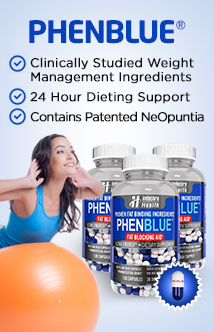Sensa Review
- Diet Pill Reviews
- Hits: 3550
The latest weight loss product to hit the market and create a buzz is Sensa. This seems to be quite a unique concept for a weight loss product and the published results are impressive, but upon further review can Sensa really be all that great?
Sensa is considered a food product and is not a diet pill. It is made up of "sprinkles" called tastants. To use Sensa all you do is sprinkle it on ever bit of food you eat. As you eat your food Sensa works with your taste and smell senses to trigger the satiety center of the brain, naturally inducing the feeling of fullness. Although Sensa is more or less tasteless itself, it is said that Sensa increases the taste of blander and often healthier foods such as tofu and vegetables. By increasing the flavor of foods, Sensa claims you will eat less. Well I don’t know, but if something is even tastier I’m likely to eat more not less, but maybe that’s just me.
Review of Sensa Ingredients
The ingredients of Sensa are very basic. From the official website, it lists the ingredients of Sensa as: Maltodextrin (Derived from Corn from the USA), Tricalcium Phosphate, Silica, Natural and Artificial Flavors, FD&C Yellow 5, and Carmine. Sensa also contains Soy and Milk ingredients. Sensa is sodium-free, sugar-free, calorie free, gluten-free, and there are no stimulants, drugs or MSG.
Let’s look at the ingredients a little bit closer.
Maltodextrin - Maltodextrin, classified as a sweet polysaccharide, contains fewer calories than sugar but still packs a sweet punch. Sensa contains Maltodextrin derived from corn so anyone with a corn allergy shouldn't take this product.
Tricalcium Phosphate - Tricalcium Phosphate, a mineral found in rocks, is typically used in powdered spices as an anti-caking agent. Since there is no published evidence that this mineral helps with weight loss I assume that it is added to keep Sensa sprinkly, not clumpy.
Silica - Silica is found in nature as sand or quartz, as well as in the cell walls of diatoms (small, unicellular organisms). Silica is most commonly used as a food additive in powdered foods to help them absorb water. Since there is no published evidence that Silica enhances weight loss I assume that it is added to help Sensa absorb water when it is added to your food so that it appears to just melt away instead of remaining as crunchy sprinkles.
Carmine - According to Wikipedia, Carmine is a pigment that is extracted from carminic acid in insects. The process of making Carmine involves boiling down dried insects. As a food dye, Carmine has been known to cause severe allergic reactions and anaphylactic shock in some people. Again, another ingredient with no research to support that it helps with weight loss, and with this one I can't really figure out why it has been added. Perhaps as a coloring.
Review of Sensa Clinical Trial
Sensa claims to have conducted a clinical study with over 1,400 people, both men and women. Over a period of six months, the test group participants lost an average of 30.5 pounds. That's a lot of weight! But you know how misleading statistics from clinical trials can be. The reputable news show 20/20 did their own review of Sensa and found that many of the claims about the clinical trial were false. You can view that new clip here: 20/20 - Does the Sprinkle Diet Work?
Will Sensa Help you to Lose Weight?
There are not yet any raving reviews about Sensa. Because the product is so new, many people are just trying it for the first time. Just by looking at the ingredients it is hard to say how Sensa will really help you lose weight. I suppose that sweetening your foods with maltodextrin instead of sugar will lower your calorie intake, but if that’s the only helpful weight loss ingredient you are better off buying an artificial sweetener instead of paying $59.00 for a one month’s supply of Sensa. Afterall, this product is rather pricey for ground rocks, insect pigments and corn sugar. I will try almost everything once, but I think I will be giving Sensa a pass.
Is Sensa Approved by the FDA?
Because Sensa is classified as a food product it does not require approval by the FDA to be sold.














